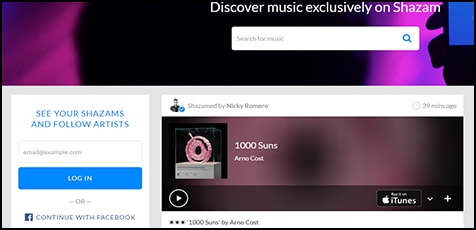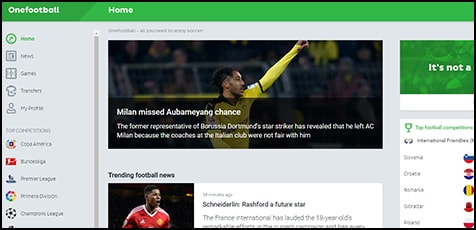Ingenious Uses of the Most Popular APIs Pt. 1

Whether you are a CIO or a small business owner, whether it is for a mobile app or your website, these APIs seem to be continuously appearing everywhere. Today, we are going to talk about some of the most popular APIs and, more specifically, some of the unique, creative and ingenious ways companies are using the world’s most accessible APIs to create unforgettable experiences for their customers or their users. And in turn, how you can use them for your business.
In case you need a refresher, APIs are basically messengers between two systems that continuously send and receive requested data. I.e. when you receive mail on your smartphone, there is an API between your mail provider and the application on your phone. You do not have to do anything, the API already knows what it is supposed to do.
In this article, we are going to look at a few of the most popular APIs and show you how other companies (both large and small) are using these APIs to their advantage.
Most Popular APIs
Facebook API
Facebook has over 20 APIs that are available on their Facebook for Developers Website. The APIs are organized into 6 categories: Build, Growth & Engagement, Monetization, Analytics, Verticals and Programs. Here are some ingenious uses of Facebook APIs:
Shazam

Shazam is a very intuitive app that lets users search, share and discover new music. They boast the unique feature of analyzing unknown songs and giving the listener info on what song is playing. Shazam used the Facebook Audience Network API to properly test their ad placement in their app. By using Facebook’s large ad service and testing data, Shazam determined where their users could experience ads without hampering overall user experience.
League of Legends

League of Legends is online game that has both competitive and social-focused gameplay. League of Legends (LoL) had millions of users from all over the world, but connecting with their local friends was more difficult then it needed to be. League of Legends developers used the Facebook Login API to create the Facebook Friend Discovery feature. This allowed users to integrate their LoL accounts with their Facebook accounts and created a more personal experience for their users.
OneFootball

OneFootball is an online community of football (soccer) fans from around the world that share insights, videos and photos (over 22 million users). Similar to the other two stories, OneFootball uses both the Facebook Audience Network API and the Facebook Login API. OneFootball’s app integrates with the Facebook Login API – so much that you can’t use the app without a Facebook profile. This ensures every user can be connected through the social media and increases the opportunity of OneFootball’s content and conversations being shared. Similar to Shazam, OneFootball also used Facebook’s mobile app advertisement data to implement in-app ads and monetize their product.
Twitter API
Twitter has 4 main API “objects” on their Twitter Developer Website. These main objects are Tweets, Users, Entities and Places. Twitter also has REST, Streaming and Ads API. Here are some ingenious uses of Twitter APIs:
BuzzFeed

When BuzzFeed decided to make a mobile app for their over 150 million users, they needed a seamless mobile experience that could be shared with other users and they needed to ensure a fail-safe plan and, unlike most app developers, they needed their app to scale right away. BuzzFeed used Twitter’s Twitter Social API and Crashlytics API to solve their concerns. The Twitter Social API allowed BuzzFeed to implement Tweets within their news feeds and allows people to Tweet content to other users. The Crashlytics API used the fail-safe data that Twitter has been using for years to ensure user experience was seamless.
Bleacher Report

Bleacher Report is a leading digital sports content and coverage platform. They have over 44 million unique monthly users. Bleacher Report needed to create a platform for the thousands of authors and contributors to seamlessly release content. Bleacher Report realized that the social media that sports fans were using most often to break news and post insights was Twitter. Bleacher Report implemented the TweetDeck API, Twitter Lists API, Twitter Search API and Twitter Embed API for their mobile and web applications. This allows the many authors to track content that comes in, engage with users and quickly implement tweets, image and videos into their news posts. This creates an experience for both readers and authors that could not happen without APIs.
Pinterest API
Pinterest has a single API on their Pinterest Developer Website – aptly titled The Pinterest API. This API gives users access to all of Pinterest’s boards, Pins, followers and more. Here is an ingenious use of The Pinterest API:
Top Shop

Top Shop has one of the most creative uses for the Pinterest API. The company used the API to develop a web app called Pinterest Palettes. Once a user visits the Top Shop, they can login with their Pinterest account and the Pinterest Palette will take their chosen fashion boards and create colour palettes. The web app will then pull from Top Shop’s catalogue and show users clothing that matches their Pinterest Palette. Because Pinterest users already have loads of information that represent their preferred clothing choices, Top Shop can utilize that data and create personalized experiences for their customers.
But Wait, There’s More
APIs are a great tool for developers and can really change how your customers or users experience your apps. APIs allow your business to utilize the mass amounts of data that some the most recognized companies in the world have already acquired. You can use the Facebook Audience Network API to gauge what your customers prefer in terms of advertising, you can use the Facebook Login API to gain more insights about who your customers really are, you can use the Pinterest API to review your customers’ preferences for everything from clothing, to home décor, to favourite vehicles. APIs allow businesses to streamline their processes and automate task. They can save you time, increase your revenues and simplify your work day.
The possibilities available are astounding and they will only continue to expand in the coming years. And you as a business will be able to use these APIs in ways that were previously unimaginable. Get ready – the momentous wave of API solutions is only just beginning.
For more ingenious uses of Google APIs, YouTube APIs and EBay APIs, check out Ingenious Uses of the Most Popular APIs Pt. 2!
If you enjoy our Web Blogs, be sure to subscribe to our Core Web Newsletter!
And as always, Thanks for Reading!
Steve Malott







Comments